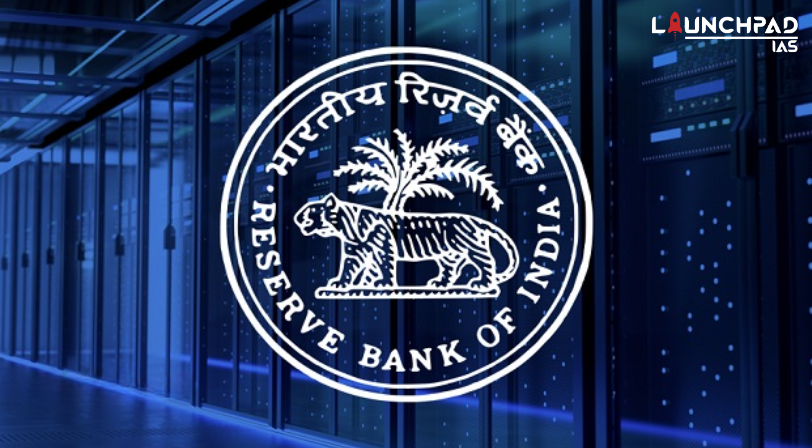History of RBI
- The Reserve Bank of India (RBI) was established on April 1, 1935, in accordance with the provisions of the Reserve Bank of India Act, of 1934.
- The Central Office of the Reserve Bank was initially established in Calcutta but was permanently moved to Mumbai in 1937. The Central Office is where the Governor sits and where policies are formulated.
- Though originally privately owned, since nationalization in 1949, the Reserve Bank is fully owned by the Government of India.
Preamble of the RBI
The Preamble of the Reserve Bank of India describes the basic functions of the Reserve Bank as:
- To regulate the issue of Bank notes and keeping of reserves with a view to securing monetary stability in India and generally to operate the currency and credit system of the country to its advantage.
- To have a modern monetary policy framework to meet the challenge of an increasingly complex economy.
- To maintain price stability while keeping in mind the objective of growth.
Structure of Reserve Bank of India
- The Reserve Bank’s affairs are governed by a central board of directors. The board is appointed by the Government of India in keeping with the Reserve Bank of India Act.
- The directors are appointed/nominated for a period of four years.
RBI Constitute
- Official Directors (central board of directors)
- Full-time: Governor and not more than four Deputy Governors
- Shri Shaktikanta Das is the present Governor of RBI
- Non-Official Directors
- Nominated by Government: ten Directors from various fields and two government Official
- Others: four Directors – one each from four local boards (regional)
Main Functions of the RBI
Monetary Authority
- It implements and monitors the monetary policy and ensures price stability while keeping in mind the objective of growth.
- An amendment to the RBI Act, 1934, was made in May 2016, providing the statutory basis for the implementation of the flexible inflation targeting framework.
- Section 45ZB of the amended RBI Act, 1934, also provides for an empowered six-member Monetary Policy Committee (MPC) to be constituted by the Central Government by notification in the Official Gazette
Monetary Policy Committee
- It was created in 2016.
- It was created to bring transparency and accountability in deciding monetary policy.
- MPC determines the policy interest rate required to achieve the inflation target.
- The committee comprises six members and Governor RBI acts as an ex-officio chairman. Three members are from RBI and three are selected by the government.
- The inflation target is to be set once in five years. It is set by the Government of India, in consultation with the Reserve Bank.
Current inflation target is pegged at 4% with -2/+2 tolerance till March 31, 2021.
- Regulator and Supervisor of the Financial System:
- Prescribes broad parameters of banking operations within which the country’s banking and financial system functions such as issuing licenses, branch expansion, liquidity of assets, amalgamation of banks, etc.
- Objective: maintain public confidence in the system, protect depositors’ interest, and provide cost-effective banking services such as commercial banking, and cooperative banking, to the public.
- Manager of Foreign Exchange:
- Manages the Foreign Exchange reserves of India.
- It facilitates external trade and payment and promotes orderly development and maintenance of the foreign exchange market in India.
- It also maintains the external value of the rupee.
- Issuer of Currency:
- Issues and exchanges or destroys currency and coins not fit for circulation.
- Objective: to give the public an adequate quantity of supplies of currency notes and coins in good quality.
- Developmental Role:
- Performs a wide range of promotional functions to support national objectives such as making institutional arrangements for rural or agricultural finance.
- Commercial banks lend loans to small-scale industrial units as per the directives (Priority Sector Lending) issued by the Reserve Bank of India from time to time.
- Financial Inclusion:
- The Reserve Bank has selected a bank-led model for financial inclusion in India. RBI has undertaken a series of policy measures. Some of the important ones are:
- No Frills Accounts – accounts either with nil or very low minimum balance as well as charges that would make such accounts accessible to vast sections of the population.
- Use of Technology – devices such as ATMs, hand-held devices to identify user accounts through a card and biometric identifier, Deposit-taking machines Internet banking, and Mobile banking facilities to provide banking services to all sections of society with more ease.
- Related Functions:
- Banker to the Government: performs merchant banking functions for the central and the state governments.
- It is entrusted with the central govt.’s money, remittances, and exchange and manages its public debt as well.
- Banker to banks: maintains banking accounts of all scheduled banks. It also acts as a lender of last resort by providing funds to banks.
Which Acts are Administered by the RBI?
- Reserve Bank of India Act, 1934
- Public Debt Act, 1944/Government Securities Act, 2006
- Government Securities Regulations, 2007
- Banking Regulation Act, 1949
- Foreign Exchange Management Act, 1999
- Securitization and Reconstruction of Financial Assets and Enforcement of Security Interest Act, 2002 (Chapter II)
- Credit Information Companies (Regulation) Act, 2005
- Payment and Settlement Systems Act, 2007
- Payment and Settlement Systems Act, 2007 As Amended up to 2019
- Payment and Settlement Systems Regulations, 2008 As Amended up to 2022
- Factoring Regulation Act, 2011


